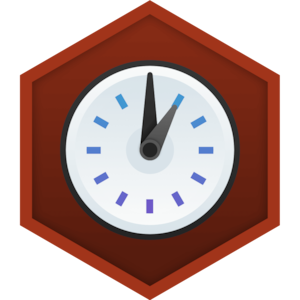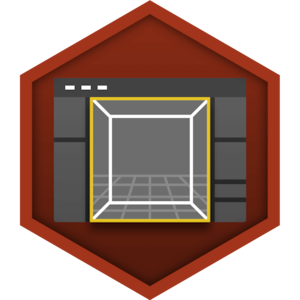Choose your operating system:
Windows
macOS
Linux
The Unreal Editor is a suite of editors, browsers, and tools for working with content in the Unreal Engine. At the core, it is used for designing a Level; but contained within are editors and browsers for importing and manipulating content for your project.
Interface Element Types
The interface of the Unreal Editor is completely configurable in terms of layout. It is comprised of tabbed windows that can be rearranged to suit your needs. These windows can either be top-level editors or tabs within those editors.
Editors
Editors are like applications within the Unreal Editor, such as the Level Editor and Blueprint Editor . They are targeted at a specific aspect of the development or design process. Some editors can only have a single instance in existence at any time, such as the Level Editor. However, other editors can have multiple instances created, but only a single instance of an editor can be editing a specific asset at any time (an example of this is the Blueprint Editor).
General editors are opened through the Window menu, while asset editors are opened by choosing to edit a particular type of asset. The Level Editor is a special case and is always present while the Unreal Editor is open.
Editors can be closed by clicking the Close App ( X ) button on the editor's tab, or by right-clicking and choosing Close .

Each editor consists of a Menu Bar and one or more tabs which comprise most of the functionality of the editor.
Editor Tabs
If you are using multiple editors simultaneously, it might help save screen space if you dock them together. At the top of every editor is a beveled tab containing the name of the editor and the asset being edited. By dragging that tab, you can dock that editor alongside any other editor in the view.

Editor tabs differ from the tabs used on panels. Panels can be docked anywhere within their native editor. Editor tabs can only be docked alongside other editors. Also note the difference in shape; editor tabs are beveled in at the sides, where panel tabs remain squared.
Panels
Panels are specialized parts of editors that provide a specific aspect of the functionality of the editor. Editors can contain any number of panels. The panels belonging to a specific editor only affect their parent editor and can only be docked within that particular editor. Panels are also opened through the Window menu.
Most panels will have tabs at their upper left corner. These tabs can be used to reposition, re-dock, or close the panel. Panels can be closed by right-clicking on the tab and choosing Close or clicking the small X on the right side of the tab.
Whenever possible, tabs will be named after the asset currently being edited within that tab's editor. For instance, the Level Editor tab will display the name of the level currently being edited.
If a tab is the only one within a tab well, it can be hidden by right-clicking on it and choosing Hide Tabs . Alternatively, you can use the Hide Tabs option in the Tab Options menu. This collapses the tab well so that only the content portion of the tab is displayed. When a tab is hidden, the top-left corner becomes gold.

Clicking the top-left corner will expand the tab again.
Menus
Menus will be located at the top of any appropriate editor window. Some of the menus, such as Window and Help , are consistent throughout all editor windows.

Docking and Layout
Tabs can be docked by dragging the tab from its current location to where it is to be docked.
The layout of tabs in the editor, including floating windows, is persistent between sessions and is saved automatically when closing the editor. Tabs also remember their last location and will reopen there.
Saving and Loading Custom Layouts
The Unreal Editor now has the functionality of creating, saving, loading, exporting, and importing multiple Unreal Editor UI layouts (even across different machines or devices). Not only can individuals create and save customized layouts, but team members can create specific Unreal Editor layouts that improve their workflow and share these layouts with everyone on the team.
At the bottom of the Window menu is a section labeled Layout . In the Layout section there are options for Load Layout , Save Layout , and Remove Layout .

In Editor Preferences , you can disable or enable Editor Layout Management . In your open project, click Edit > Editor Preferences to open. Then navigate to General > Appearance > User Interface , and click the box next to Enable User Editor Layout Management to enable or disable. Disabling Editor Layout Management removes the Save Layout and Remove Layout menus, and also removes the Import Layout submenu option.
Load Layout

This menu has the following submenu options:
-
Default Editor Layout : Load the default layout.
-
User Layouts : Load a layout created or imported by the user. This option will only display if you have saved or imported layouts available.
-
Import Layout : Import a layout (or multiple layouts) from anywhere on your computer and load it immediately. These imported layouts will be saved and displayed in the User Layouts section, so they can be loaded at any time.
Save Layout

This menu has the following submenu options:
-
Save Layout As : Save your layout with a custom name. It will be saved to disk, and automatically displayed in the User Layouts section.
-
Export Layout : Similar to Save Layout As , but it can be saved into any directory on your computer, and it will not be shown in your User Layouts section. This is useful to export/import across machines.
Remove Layout

This menu has the following submenu options:
-
User Layouts : This shows all layouts you have saved or imported.
-
Remove All User Layouts : Remove all the saved layouts in the User Layouts directory.










